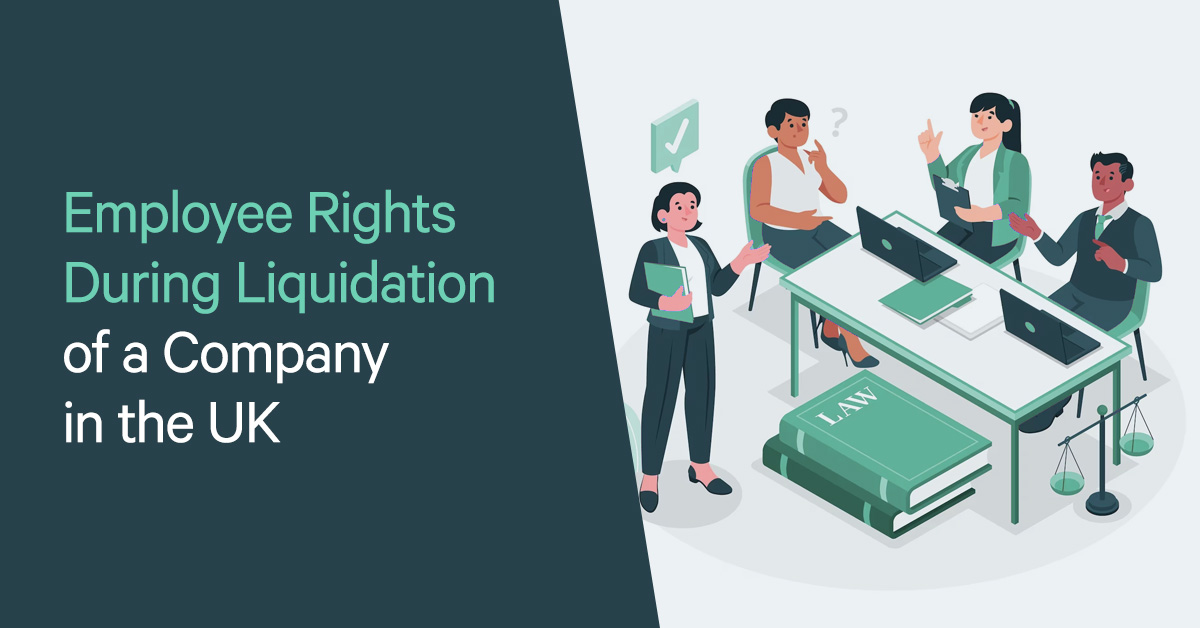Do You Still Obtain Redundancy If Company Goes Into Administration? Insights for Administration Staff and Their Pay
Do You Still Obtain Redundancy If Company Goes Into Administration? Insights for Administration Staff and Their Pay
Blog Article
Business Insolvency Company
7 Preswich Avenue, Leigh, WN7 1RZ
0333 567 1686
Recognizing the Repercussions of Business Liquidation on Worker Retention and Advantages

Effect On Job Safety
In the occasion of company liquidation, the impact on work security can be substantial for employees as unpredictability concerning future employment develops. When a firm goes right into liquidation, workers encounter the daunting prospect of prospective work loss. This unpredictability can lead to heightened tension and anxiousness amongst the workforce, impacting their morale and efficiency.
During the liquidation procedure, staff members may experience a series of emotions, including frustration, temper, and anxiety, as they grapple with the opportunity of unemployment. The absence of quality surrounding the timeline of the liquidation and the destiny of their positions can create a sense of instability within the labor force.
Moreover, workers might likewise be concerned about the condition of their advantages, such as medical care protection, retirement, and paid pause, during and after the liquidation process. The prospective loss of these benefits adds one more layer of complexity to an already tough scenario for workers.
Changes in Worker Conveniences

One typical change is the decrease or elimination of certain advantages to cut expenses and resolve superior debts. For example, employer contributions to retired life plans might stop, leaving workers to shoulder the complete responsibility of conserving for their future. In addition, health care advantages might be downsized, leading to greater out-of-pocket expenditures for clinical services.
Communication becomes vital during this period of shift. Employers have to be transparent about the adjustments, giving clear descriptions and support to aid staff members navigate via the adjustments. Open discussion and support can aid minimize anxiety and unpredictability among the labor force, promoting an extra positive shift experience in spite of why not find out more the challenging situations.
Retention Approaches Post-Liquidation
Following the business liquidation, implementing effective retention techniques is crucial to protecting business ability and keeping security within the labor force. In times of unpredictability, workers might feel anxious about their future task protection and be a lot more inclined to seek alternate job opportunity. To reduce this threat, companies must focus on open interaction, providing transparency regarding the firm's circumstance, and offering assistance to employees throughout the transition duration.
One key retention strategy post-liquidation is to focus on staff member health and morale. In addition, providing profession advancement possibilities and upskilling programs can boost staff member inspiration and interaction throughout tough times.
Additionally, establishing a clear profession progression course and setting practical goals can offer staff members a sense of direction and purpose within the company (do employees get paid when company goes into liquidation). By buying worker development and proactively involving them in decision-making procedures, companies can enhance staff member retention rates and construct a durable workforce post-liquidation
Legal Legal Right and Protections
During the consequences of business liquidation, it is essential to deal with the legal civil liberties and securities readily available to employees to make certain a reasonable and certified process. It is vital for employees to comprehend these rights and look for legal recommendations if needed to browse the complexities of the liquidation procedure.
In addition, in situations where a company goes into liquidation, employees are usually taken into consideration special lenders, approving them greater concern in receiving exceptional repayments over various other financial institutions. Recognizing these legal rights YOURURL.com and securities is essential for staff members to secure their interests and seek proper recourse in the event of business liquidation - what happens to staff when a company goes into liquidation.
Dealing With Financial Unpredictability
Navigating financial uncertainty can be a challenging obstacle for staff members affected by company liquidation. The sudden loss of earnings, benefits, and job safety and security can dramatically interrupt individuals' monetary security. During such times, it is crucial for workers to examine their present financial circumstance realistically. Producing a Home Page detailed budget plan that prioritizes vital costs can aid in managing immediate monetary needs. In addition, checking out readily available government support programs, such as unemployment benefits or re-training possibilities, can provide some relief.
It is crucial for staff members to remain educated concerning their privileges, such as severance packages or impressive payments, to guarantee they get what they are owed. By proactively addressing economic difficulties, workers can browse through the uncertainty created by firm liquidation with greater durability and preparedness.
Conclusion
Finally, business liquidation can have significant implications on employee job protection, benefits, and general wellness. It is essential for companies to apply retention strategies and provide assistance to employees during this unpredictable time. Understanding legal civil liberties and securities can help alleviate the effect of liquidation on employees. Dealing with financial unpredictability calls for an aggressive strategy and interaction from both companies and workers to navigate through the obstacles effectively.
When a business deals with liquidation, the fate of its workers hangs in the equilibrium, raising important inquiries regarding job protection, advantages, and long-term security. The influence of firm liquidation on employee retention and advantages is a multifaceted concern that demands a closer assessment to recognize the complete extent of its repercussions.
Browsing financial uncertainty can be a challenging challenge for employees affected by business liquidation. By proactively attending to monetary obstacles, employees can navigate through the unpredictability created by company liquidation with better resilience and preparedness.

Report this page